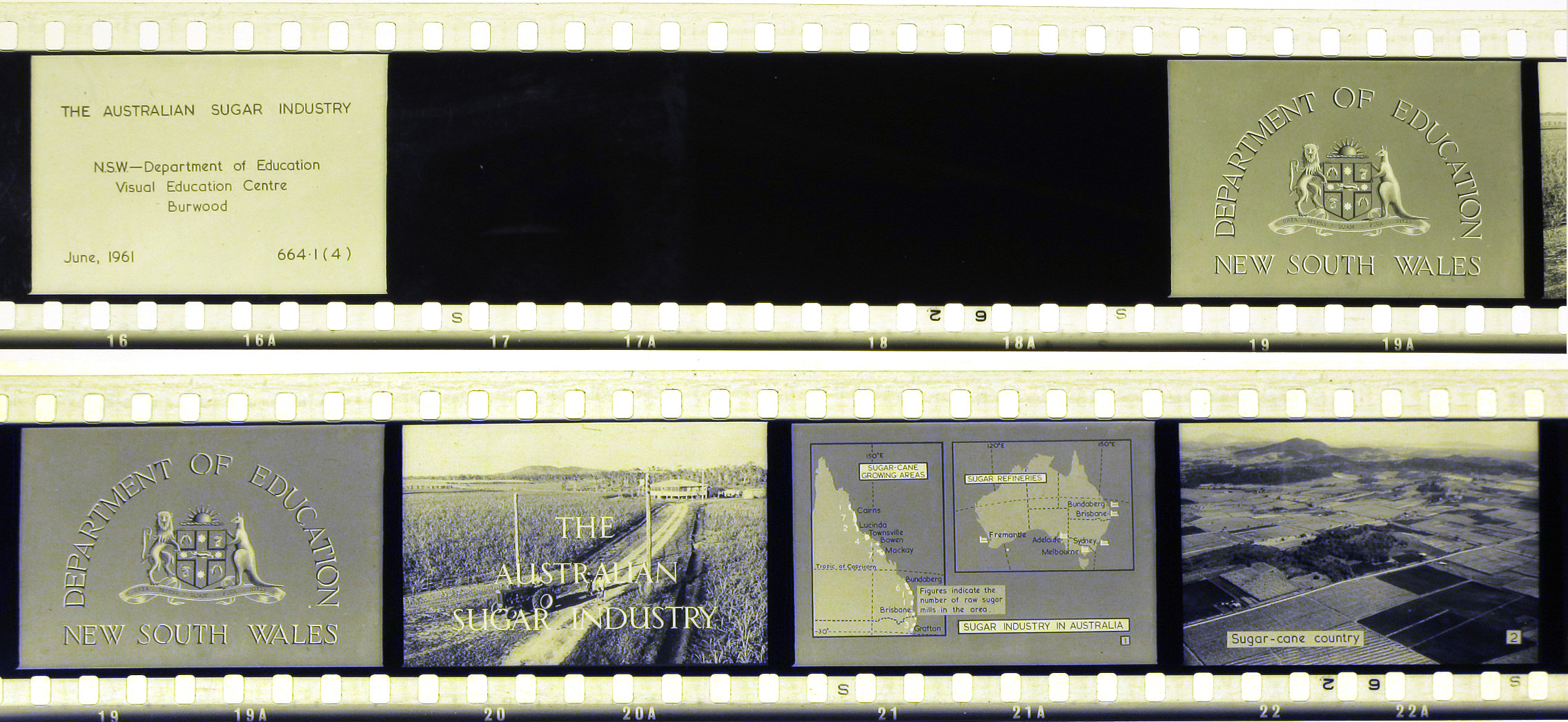
Hands up if you remember those old black and white strip films shown in Social Studies lessons at school? The ‘blind monitor’ would pull down the tall window blinds darkening the classroom, and a screen, usually in front of the blackboard, would be brought down. None of this lounging around on carpet: we all faced the front, sitting bolt upright at school desks screwed to the floor. The ‘projector monitor’, the luckiest kid in the class, got to operate the projector, which would start to whirl as the cooling fan kicked in while dust specks swirled in the bright light. The show was about to begin!
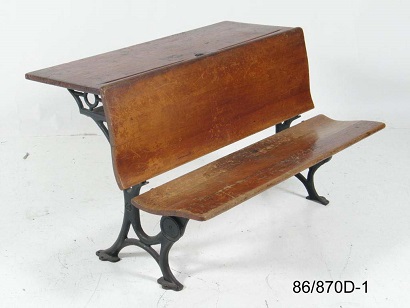
While the show was a welcome diversion from parsing, long division and dictation, what we didn’t realise was the filmstrips were an educational revolution in Australia akin to smart boards today. They were stored in neat little canisters which could be easily dispatched to schools. Accompanying them was a script read by the teacher describing the 25 or so images depicted in the films, which were manually advanced in the projector.
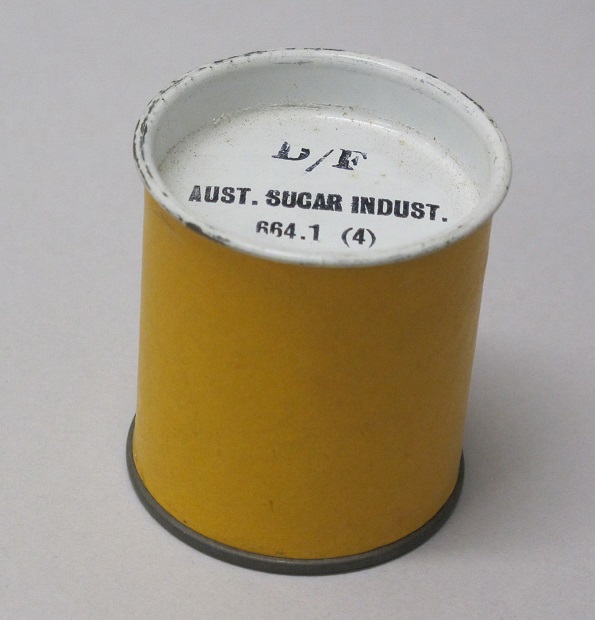
The use of filmstrips as an educational and promotional aide was taken up in about the 1930s. Car manufacturers used them to show dealers the latest models. During World War II, Australian and US military authorities taught millions of soldiers how to aim a rifle and avoid contracting diseases like syphilis. They also showed women how to become factory workers and to hold riveting guns. By the late 1940s filmstrips were being produced by units within the Departments of Education in various Australian states and New Zealand. It was claimed in 1954 that Australia was probably the world’s largest producer of strip films specifically for classrooms, made by ‘teacher-producers’.
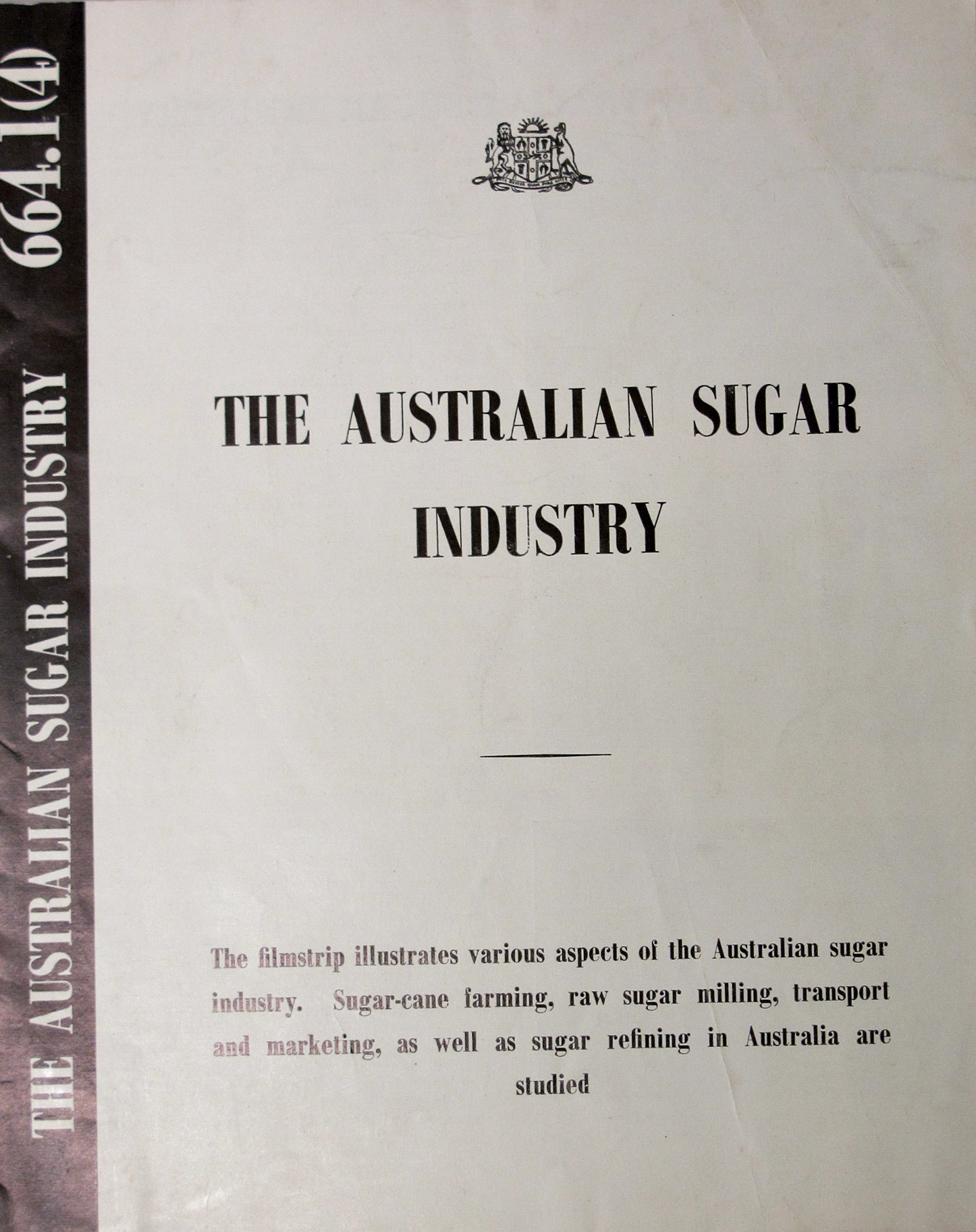
In NSW, inexpensive 35 mm projectors to show the films were provided by the NSW Education Department. If school P&Cs raised the necessary 80 percent of their costs, the Department took over responsibility for servicing and maintenance of the projectors and provided filmstrips free of charge. Fundraising took place in schools selling badges like this one for the ‘projector fund’.
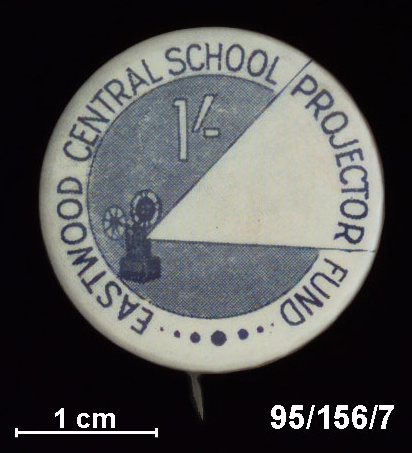
Typically, the projectors featured a body constructed of cast aluminium, an internal projection unit, an external revolving film transporting mechanism and a fixed focal-length projection lens.
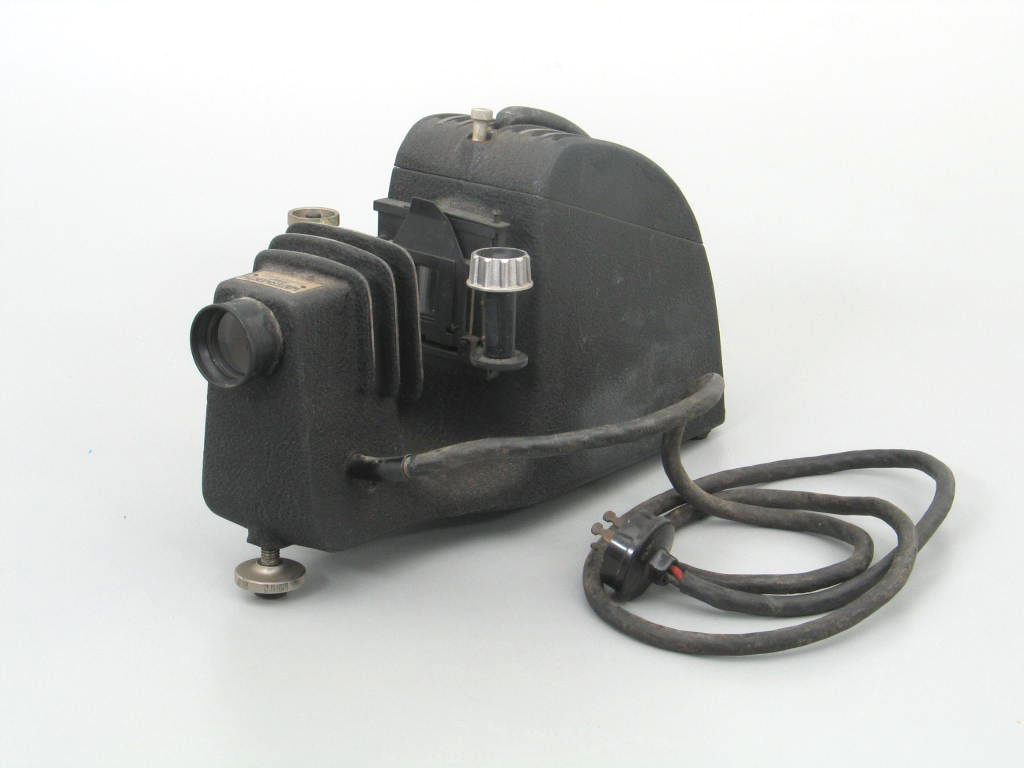
As the projectors were powered by electricity, this provided a challenge in some remote country schools where electricity was yet to reach their communities. In 1952, battery-operated projectors had to be used at the small NSW schools of Frogmore and Rye Park, north of Yass (though electricity was connected in both villages two years later). Nevertheless, the films must have opened a whole new world to isolated students, especially when reference books were few, school libraries non-existent and it was years before TV arrived.
A 1954 newspaper article featured an interview with an officer from the Department’s Visual Education Centre who said:
“That one good picture is worth more than a thousand words has long been accepted by teachers. But the development of Visual Education goes beyond the provision of illustrative material for school lessons it is also a reflection of the community interest in and preoccupation with modern means of communicating ideas. “
The article goes on to acknowledge the international significance of filmstrips in that:
“The complexities of living in increasingly scientific and industrialised communities call for rapid and effective communication of systems of thought. At one extreme, the film strip is the chief weapon in UNESCO’s education campaign against the complete illiteracy of hopelessly backward peoples.”
Maybe you were one of the kids inspired to follow a career in engineering or science after seeing filmstrips with titles such as “Atoms at Work“, “Modern Air Travel“, “Telescopes of Mt Stromlo Observatory“, “Warragamba Dam” and the “Snowy Mountains Scheme” which recalled contemporary scientific and engineering advances of the day. Or perhaps you wanted to become an archaeologist after watching the ones called “Save the Treasure of Nubia” and “Mesopotamia” highlighting the latest archaeological findings. Other films were devoted to subjects on Commonwealth countries and near neighbours including “Introducing Canada“, “Volcanoes in New Zealand” and “Life in Papua and New Guinea”.
The films were easy and inexpensive to reproduce, while a Departmental film library was established in the Sydney suburb of Burwood, claimed to be the largest of its kind in the world. In 1964 alone, a total of 91,861 filmstrips were issued to public schools and 3,071 purchased by non-Government schools.
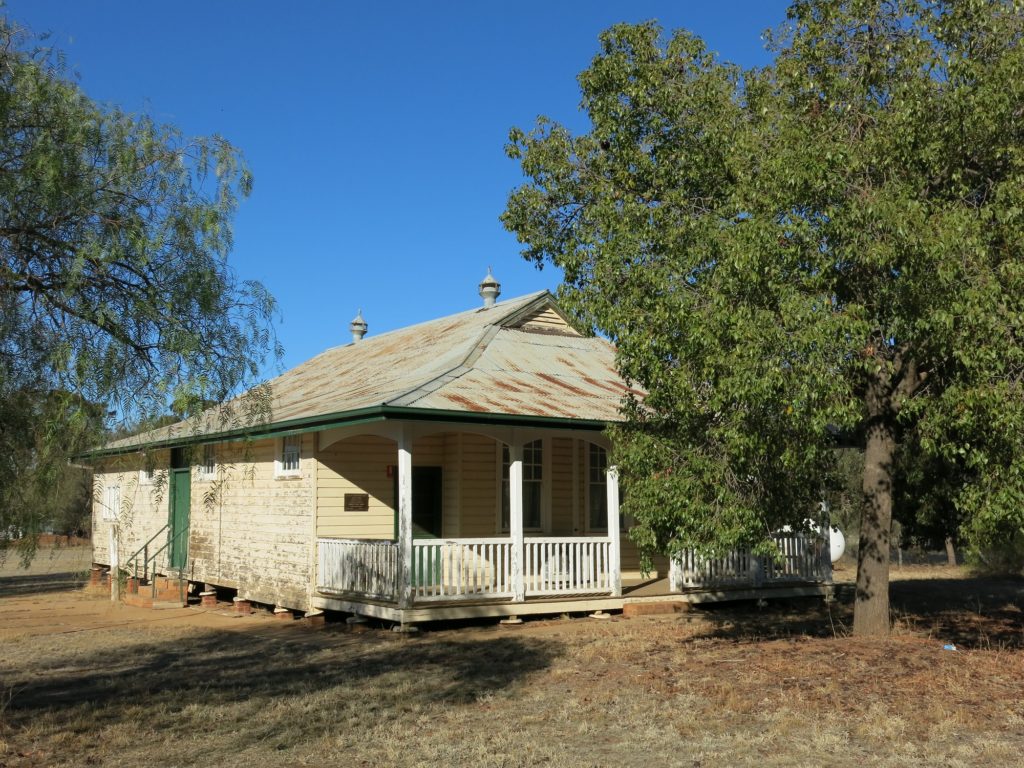
Possibly used at some primary and secondary schools until the 1980s, filmstrips dominated visual media in Australian classrooms for over three decades. Sometimes filmstrips were eventually converted to slides, and over time were superseded by motion pictures with sound, video cassettes and the internet. It could be argued that the introduction of filmstrips, especially in country schools, would have been as revolutionary and exciting for the students and teachers as today’s interactive whiteboards and access to internet programs and educational apps.
References
“Films Have Become The Classroom’s Seven League Boots’ in “The Sydney Morning Herald”, 5 August
1949
“The Film, Too, Is the Thing” in “The Sydney Morning Herald”, 14 January 1954, p.11.
Written by Margaret Simpson, Curator, November 2018
Remember them well! In fact I acquired a collection of strips in their little canisters. I imagine MAAS has a good collection but if there are any gaps I’m happy to pass them on.
That desk takes my back too. And the inkwells. And the blue black ink the ink monitor had to make up with powder and water. Does anyone remember the kind of ‘metho’ flavour of the pen handles when you absentmindedly chewed them to help concentrate? (That was my excuse!) Heavier down strokes, lighter upstrokes…
At my country school, we had a room under the classrooms which was easily darkened. All the classes would file down there and sit on benches to watch the films. It was a small school of 100 pupils, and this was just the right activity for one Friday afternoon per month.
The projector, screen, and the room had been provided by hardworking parents, raising funds, and also providing the labour to convert the area from an open space under the school. This was a Queensland school on poles, providing welcome shade from hot summer sun, and dry play area in rainy weather.